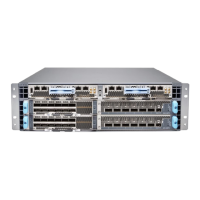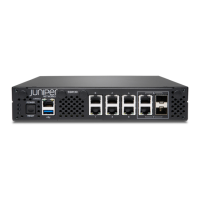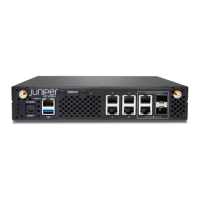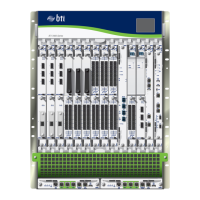•
One 10-Gigabit Ethernet— Connects the Routing Engine and Switch Fabric Board.
•
One USB port—Provides a removable media interface through which you can install Junos OS manually.
Junos OS supports USB versions 3.0, 2.0, and 1.1.
•
Management ports—Two ports, one copper (RJ-45) port and one SFP port, provide access to management
devices. Use only one of the two management ports at a time.
Use an RJ-45 connector for the copper port.
Use a fiber optic connector for the SFP port.
Do not use copper SFP or SFP-T modules in the SFP port as they are not supported.
•
RESET button—When pressed, reboots the RCB as detailed below:
•
When pressed for less than 5 seconds for diagnostic purposes, the RCB does not reset. The press
event is logged in the RCB FPGA register.
•
When pressed for greater than 5 seconds but less than 10 seconds, the RCB reboots and the
reset-reason logs the button press event.
•
When pressed for greater than 10 seconds, the RCB reboots with an option for BIOS recovery.
•
LEDs—Provide status of the Routing Engine.
•
Online/Offline Button—When the RCB is online and if the button is pressed for more than 4 seconds,
the RCB goes offline. When the RCB is offline and if the button is pressed more than 4 seconds, the
RCB starts booting.
For specific information about Routing Engine components (for example, the amount of DRAM), issue the
show vmhost hardware command.
Figure 34: Routing and Control Board Faceplate
7—1— Reset buttonHandles
8—2— Online/Offline buttonBITS-0 clock port
9—3— USB portGPS clock ports
10—4— Management (MGMT) portsXGE-0 and XGE-1 Juniper Control System (JCS) ports
11—5— Console (CONSOLE) portToD—Time-of-day (TOD) port
6—BITS-1 clock port
77
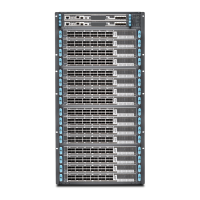
